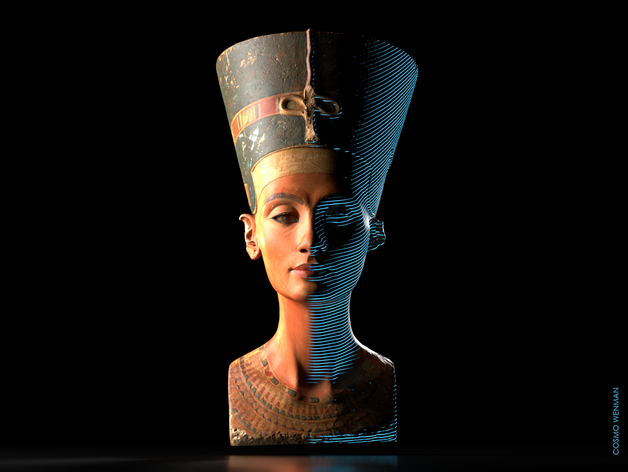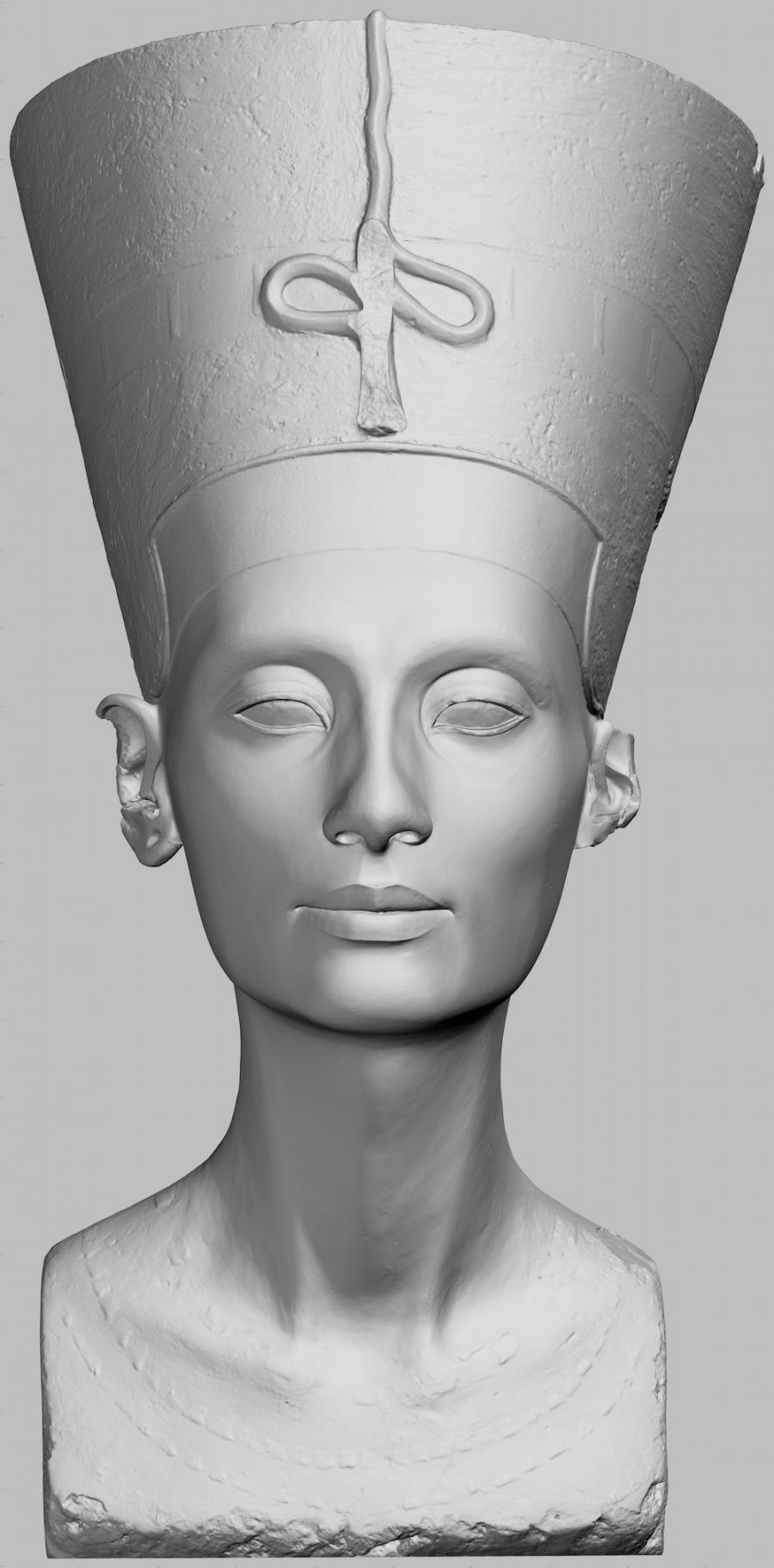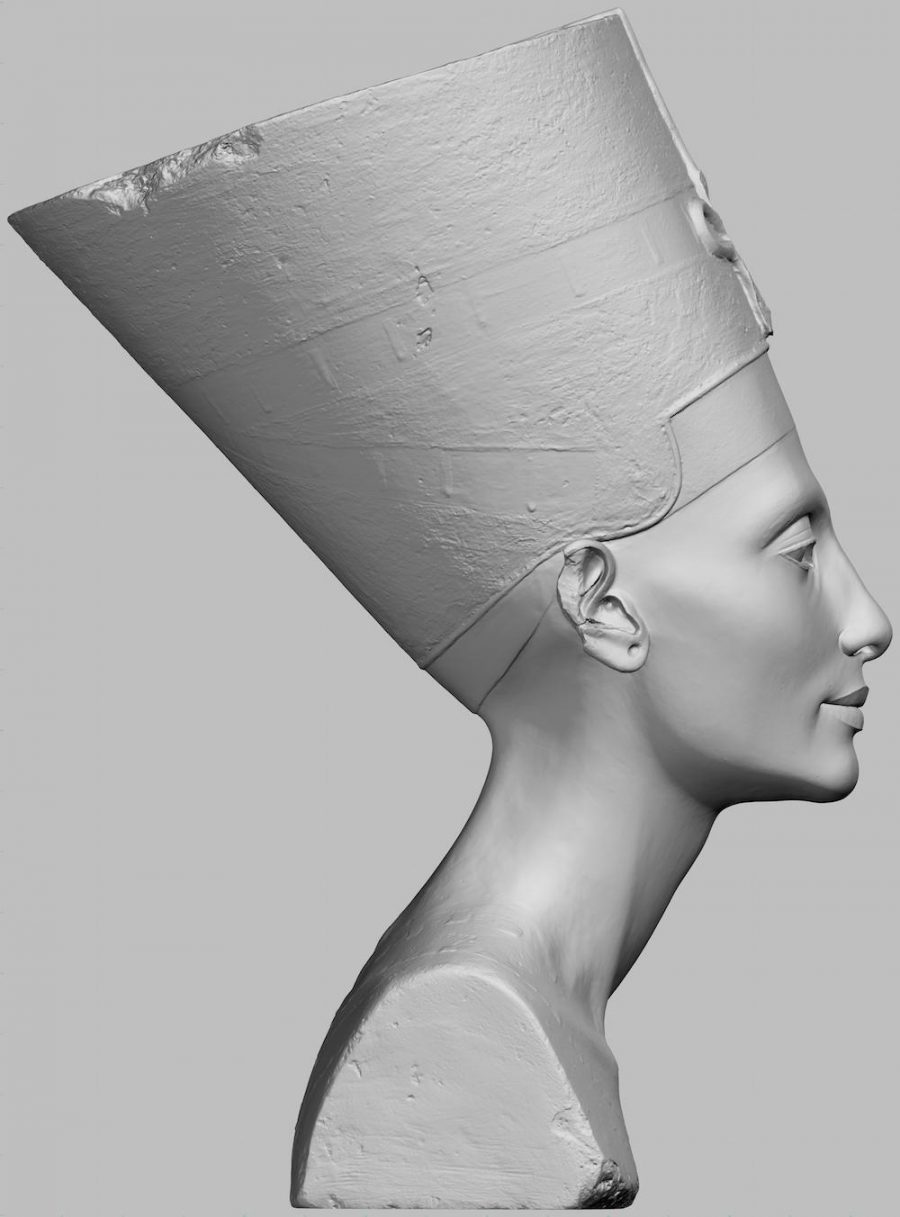[Most Recent Entries] [Calendar View]
Monday, November 18th, 2019
| Time | Event |
| 3:00p | What Ancient Chinese Sounded Like — and How We Know It: An Animated Introduction No student of Chinese has an easy time with pronunciation. Even linguist Joshua Rudder, who tells animated stories on his Youtube channel NativeLang about languages around the world and how they came to be, admits his own struggles to get it right. "But lately I've been burying myself in hundreds of pages of Chinese linguistic history, and you know what? I'm in good company," says Rudder in the introduction to the video above, "What 'Ancient' Chinese Sounded Like — and How We Know." "Chinese pronunciation puzzled experts in China for a long, long time." This leads into the story of one particular expert, a 19th scholar named Chen Li who sought to recover Chinese pronunciations that even then seemed to have been lost to history. "How do you recover the sounds immortalized in classical texts? How do you make the old poems rhyme again?" And how do you do it when "you have no recordings, no phonetic transcriptions, not even an alphabet — you're working with characters." Ah yes, characters, those thousands of logograms, evolved over millennia, that still today bedevil anyone trying to get a handle on the Chinese language, not excluding the Chinese themselves. That goes especially for someone as linguistically ambitious as Chen Li. Chen Li's research on the correct pronunciation of ancient Chinese brought him to the Qieyun, an even then-1200-year-old dictionary of fanqie (??), or the pronunciation of single characters described by using combinations of other characters. (On Wikipedia, you can find assembled links to scanned fragments of the text currently held in places like the British Library and the Bibliothèque nationale de France.) Drawing on not just the Qieyun but other sources as well, Chen Li's painstaking work of reconstructing old pronunciations overturned the long-standing teaching that the Chinese language had 36 initial consonant sounds. He found that it had 41. But even after that discovery, the nature of these "precise sounds" remained unknown, an incompleteness of knowledge chipped away at by the Swedish scholar Bernard Karlgren in the 1900s, who took into account "the many living varieties" of the Chinese language. Other Asian languages with vocabulary descended from Chinese also come in to play. Rudder takes the example of the word for "country," pronounced guó (?) in modern Mandarin but kuk in Korean (?), koku in Japanese (?), and ku?k in Vietnamese (qu?c), all suggesting a common ancient Chinese ancestor word ending in a K-like consonant sound. But however much progress has been made, this research into "ancient" Chinese has turned out to be research into a linguistic period of "middle Chinese," which reveals evidence of "an even older language to uncover, a thousand years older still." The work of a linguistic history, just like the humbler work of a Chinese language-learner, is never done. Related Content: What Ancient Latin Sounded Like, And How We Know It A Map of How the Word “Tea” Spread Across the World Based in Seoul, Colin Marshall writes and broadcasts on cities, language, and culture. His projects include the book The Stateless City: a Walk through 21st-Century Los Angeles and the video series The City in Cinema. Follow him on Twitter at @colinmarshall or on Facebook. What Ancient Chinese Sounded Like — and How We Know It: An Animated Introduction is a post from: Open Culture. Follow us on Facebook, Twitter, and Google Plus, or get our Daily Email. And don't miss our big collections of Free Online Courses, Free Online Movies, Free eBooks, Free Audio Books, Free Foreign Language Lessons, and MOOCs. |
| 5:57p | How Art Nouveau Inspired the Psychedelic Designs of the 1960s “In the late 1800’s new technology was changing the way the world worked, and the way that it looked,” the Vox video above explains. “Some people, especially artists, living through the technological revolution, were not so into all the new industry. To be blunt, they thought it was ugly.” They responded with organic forms and intricate patterns that evoked a pre-industrial world while simultaneously showcasing, and selling, the most modern ideas and products. Drawing on the handcrafted aesthetic of the Arts and Crafts Movement, the Gothic revival, the florid, ornate paintings of the Pre-Raphaelites, a fascination with Japanese woodblock prints, and the strange, beautiful illustrations of sea creatures by Ernst Haeckel, artists began to challenge late Victorian orthodoxies. The style we now know as Art Nouveau emerged. It went by many names: Jugendstil, Mondernisme, Tiffany Style, Glasgow Style, Stile Liberty, Sezessionstil. Each identified a collection of traits with which we are now familiar from the many hundreds of posters and advertisements of the time. Grand, flowing lines, intricate patterns, vibrant, often clashing colors, bold hand-lettering, feminine figures and elaborate, exotic themes…. The descriptions of Art Nouveau’s qualities also apply to the poster and album cover art of the psychedelic 1960s, and no wonder, given the significant influence of the former upon the latter. The artists of the acid rock period rebelled not so much against industrialization as the military-industrial-complex. At the epicenter of the movement was the San Francisco of Jefferson Airplane and the Grateful Dead. Venues like the Filmore and the Avalon advertised the hippie revolution with eye-catching posters inspired by those that once lined the thoroughfares of Europe in an age before TV, radio, and neon signs. Art Nouveau-like designs had already returned with the flower patterns popular in fabrics at the time. 60s graphic designers saw these seductive styles as the key to a new psychedelic vision. It’s easy to see why. Flowers, curves, peacocks, updates of Art Nouveau images from the past (including skeletons and roses)—dialed up to 11 with “eye-vibrating” colors—made the perfect visual accompaniment for the acid-flavored Romanticism that took root during the Vietnam era. Even the fonts were poached from turn-of-the-century graphic art. Famous 60s designers like Wes Wilson confessed their admiration for modernism, “the idea,” Wilson told Time in 1967, “of really putting it all out there.” Just as Art Nouveau flowered into an international style, with some presciently trippy manifestations in Brazil and other places, so too did the 60s psychedelic poster, spreading from San Francisco to every corner of the globe. And as Art Nouveau became the house style for the counterculture of the early 20th century—celebrating sexual and cultural experimentation and occult interests—it announced the birth of flower power and its recovery of modernism's expressive freedoms. Related Content: Harry Clarke’s 1926 Illustrations of Goethe’s Faust: Art That Inspired the Psychedelic 60s Behold the Beautiful Designs of Brazil’s 1920s Art Deco Magazine, Para Todos Josh Jones is a writer and musician based in Durham, NC. Follow him at @jdmagness How Art Nouveau Inspired the Psychedelic Designs of the 1960s is a post from: Open Culture. Follow us on Facebook, Twitter, and Google Plus, or get our Daily Email. And don't miss our big collections of Free Online Courses, Free Online Movies, Free eBooks, Free Audio Books, Free Foreign Language Lessons, and MOOCs. |
| 8:00p | David Lynch Visualizes How Transcendental Meditation Works with Sharpie & Big Pad of Paper Second only to the Beatles, David Lynch has become synonymous with the practice of Transcendental Meditation. And while the results were certainly mixed for the Fab Four, Lynch, in all his idiosyncrasies, has become the face of TM. He didn’t dabble with it mid-career. Instead, meditation helped create his career, as both his practice and the filming of Eraserhead started around 1972. “...[L]ooking back,” he said in a Daily Beast interview in 2014, “I was filled with anger and took it out on my first wife and made her life miserable. I had a low-grade depression, and wasn’t really self-assured. If I’d gone forward without the ability to transcend every day, I think the pressures of the business could’ve gotten me.” His career has been transcendent for sure, and as head of his eponymous foundation, he’s spreading the word, bringing TM to schools and calling in fellow creatives to extol its virtues. But how does Lynch himself explain Transcendental Meditation? In this video, Lynch, armed with a pad of paper and a Sharpie, takes us on a scientific journey down past atoms and protons, and down to the unified field theory of quantum physics. A “no-thing” out of which all matter emerges. Scientists can’t take us into the unified field...but the mind can. Hence, meditation. “The mantra is the key that opens the door,” he explains. (What is that mantra? It’s a personal one that the Maharishi, or someone high on the TM chain will give you after training...if you believe the TM pitch. Not everybody believes it needs be so proprietary, or expensive.) With a mantra the mind can dive deep and then deeper: “Each deeper level of mind and each deeper level of intellect has more happiness,” he says. Go deep enough and the mind hits the equivalent of the unified field, and there…transcendence. “Pure, unbounded, infinite consciousness...” he promises. “Transcendental meditation is just the vehicle to get you here.” This can’t be the first time Lynch has drawn this diagram, but it really is one of the best visualizations of how science and meditation have arrived at the same conclusion. And it's also why science is now studying the effects of meditation on the brain. For those looking for more on Lynch and meditation, we have you covered. Related Content: An Animated David Lynch Explains Where He Gets His Ideas David Lynch Muses About the Magic of Cinema & Meditation in a New Abstract Short Film David Lynch Talks Meditation with Paul McCartney Ted Mills is a freelance writer on the arts who currently hosts the artist interview-based FunkZone Podcast and is the producer of KCRW's Curious Coast. You can also follow him on Twitter at @tedmills, read his other arts writing at tedmills.com and/or watch his films here. David Lynch Visualizes How Transcendental Meditation Works with Sharpie & Big Pad of Paper is a post from: Open Culture. Follow us on Facebook, Twitter, and Google Plus, or get our Daily Email. And don't miss our big collections of Free Online Courses, Free Online Movies, Free eBooks, Free Audio Books, Free Foreign Language Lessons, and MOOCs. |
| 9:00p | Download Stunning 3D Scans of the Bust of Nefertiti, Now Released by Berlin’s Neues Museum
Two years ago, a scandalous “art heist” at the Neues Museum in Berlin—involving illegally made 3D scans of the bust of Nefertiti—turned out to be a different kind of crime. The two Egyptian artists who released the scans claimed they had made the images with a hidden “hacked Kinect Sensor,” reports Annalee Newitz at Ars Technica. But digital artist and designer Cosmo Wenman discovered these were scans made by the Neues Museum itself, which had been stolen by the artists or perhaps a museum employee. The initial controversy stemmed from the fact that the museum strictly controls images of the artwork, and had refused to release any of their Nefertiti scans to the public. The practice, Wenman pointed out, is consistent across dozens of institutions around the world. “There are many influential museums, universities, and private collections that have extremely high-quality 3D data of important works, but they are not sharing that data with the public.” He lists many prominent examples in a recent Reason article; the long list includes the Venus de Milo, Rodin’s Thinker, and works by Donatello, Bernini, and Michelangelo. Whatever their reasons, the aggressively proprietary attitude adopted by the Neues seems strange considering the controversial provenance of the Nefertiti bust. Germany has long claimed that it acquired the bust legally in 1912. But at the time, the British controlled Egypt, and Egyptians themselves had little say over the fate of their national treasures. Furthermore, the chain of custody seems to include at least a few documented instances of fraud. Egypt has been demanding that the artifact be repatriated “ever since it first went on display.” This critical historical context notwithstanding, the bust is already "one of the most copied works of ancient Egyptian art," and one of the most famous. “Museums should not be repositories of secret knowledge,” Wenman argued in his blog post. Prestigious cultural institutions “are in the best position to produce and publish 3D data of their works and provide authoritative context and commentary.”
Wenman waged a “3-year-long freedom of information effort” to liberate the scans. His request was initially met with “the gift shop defense”—the museum claimed releasing the images would threaten sales of Nefertiti merchandise. When the appeal to commerce failed to dissuade Wenman, the museum let him examine the scans "in a controlled setting"; they were essentially treating the images, he writes, "like a state secret." Finally, they relented, allowing Wenman to publish the scans, without any institutional support. He has done so, and urged others to share his Reason article on social media to get word out about the files, now available to download and use under a CC BY-NC-SA license. He has also taken his own liberties with the scans, colorizing and adding the blue 3D mapping lines himself to the image at the top, for example, drawn from his own interactive 3D model, which you can view and download here. These are examples of his vision for high-quality 3D scans of artworks, which can and should "be adapted, multiplied, and remixed."
"The best place to celebrate great art," says Wenman, "is in a vibrant, lively, and anarchic popular culture. The world's back catalog of art should be set free to run wild in our visual and tactile landscape." Organizations like Scan the World have been releasing unofficial 3D scans to the public for the past couple years, but these cannot guarantee the accuracy of models rendered by the institutions themselves. Whether the actual bust of Nefertiti should be returned to Egypt is a somewhat more complicated question, since the 3,000-year old artifact may be too fragile to move and too culturally important to risk damaging in transit. But whether or not its virtual representations should be given to everyone who wants them seems more straightforward. The images already belong to the public, in a sense, Wenman suggests. Withholding them for the sake of protecting sales seems like a violation of the spirit in which most cultural institutions were founded. Download the Nefertiti scans at Thingiverse, see Wenman's own 3D models at Sketchfab, and read all of his correspondence with the museum throughout the freedom of information process here. Next, he writes, he's lobbying for the release of official 3D Rodin scans. Watch this space. Josh Jones is a writer and musician based in Durham, NC. Follow him at @jdmagness Download Stunning 3D Scans of the Bust of Nefertiti, Now Released by Berlin’s Neues Museum is a post from: Open Culture. Follow us on Facebook, Twitter, and Google Plus, or get our Daily Email. And don't miss our big collections of Free Online Courses, Free Online Movies, Free eBooks, Free Audio Books, Free Foreign Language Lessons, and MOOCs. |
| << Previous Day |
2019/11/18 [Calendar] |
Next Day >> |





